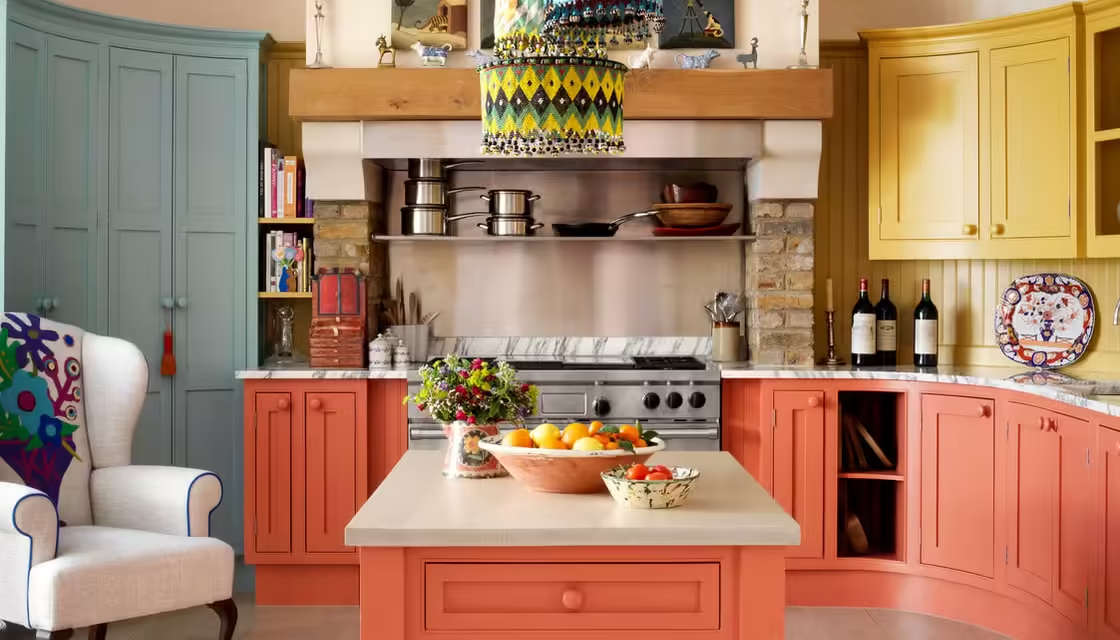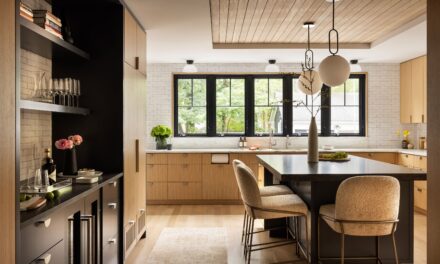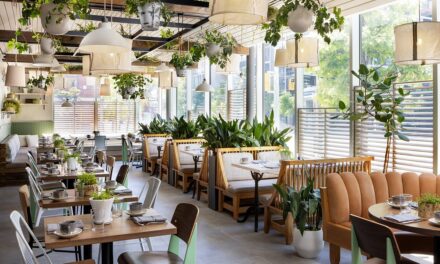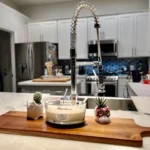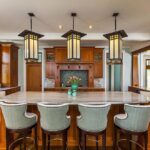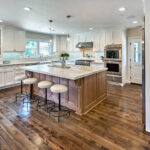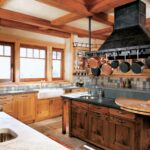“In the heart of every home lies its kitchen, where functionality meets creativity and comfort intertwines with style. Among the foundational elements that define this space, home goods kitchen cabinets stand as silent sentinels, not merely storing utensils and ingredients but embodying the very essence of organization and aesthetic appeal. Home goods kitchen cabinet transcend mere storage solutions; they are the cornerstone of a well-designed culinary haven.
Crafted with precision and passion, these cabinets blend seamlessly into the kitchen landscape, offering both practicality and elegance. From sleek modern designs that embrace minimalist chic to timeless classics that evoke warmth and tradition, each cabinet tells a story of craftsmanship and functionality. They house the tools of culinary artistry, from everyday essentials to cherished heirlooms, keeping everything within easy reach while maintaining an uncluttered ambiance.
More than just functional fixtures, home kitchen cabinets elevate the kitchen’s ambiance, reflecting the homeowner’s taste and personality. Whether sleek and contemporary or rustic and charming, these cabinets are not just storage solutions but integral pieces of the kitchen’s design puzzle, transforming a mundane chore into a delightful culinary experience.”
This introduction aims to capture the essence of home kitchen cabinets as essential elements that contribute to both the functionality and aesthetic appeal of a kitchen.
Elegant Essentials: Home Goods Kitchen Cabinets
This guide will delve into every facet of choosing, designing, and installing home goods kitchen cabinets, offering a roadmap to achieving an elegant and functional kitchen. For more information visit here
Table of Contents
Understanding Kitchen Cabinet Basics
Before diving into specific styles and designs, it’s crucial to understand the basic components of kitchen cabinets:
- Cabinet Boxes: The main structure of the home goods kitchen cabinets, usually made from plywood or MDF.
- Cabinet Doors: These come in various styles, including raised panel, flat panel, and glass front.
- Drawers: Essential for storing utensils and other kitchen tools.
- Hardware: Includes hinges, handles, and knobs which can significantly impact the cabinet’s style.
Choosing the Right Style
The style of your kitchen cabinets sets the tone for the entire room. Here are some popular styles:
a. Traditional Cabinets
- Characteristics: Rich wood finishes, detailed moldings, and classic designs.
- Materials: Cherry, oak, maple.
- Colors: Deep tones like mahogany or walnut.
- Design Elements: Raised panels, intricate carvings, and decorative hardware.
b. Modern Cabinets
- Characteristics: Sleek, minimalist designs with a focus on clean lines.
- Materials: High-gloss finishes, glass, and metal accents.
- Colors: Neutral shades like white, gray, or bold colors for a pop.
- Design Elements: Flat panels, frameless designs, and integrated handles.
c. Farmhouse Cabinets
- Characteristics: A blend of rustic charm and practicality.
- Materials: Reclaimed wood or distressed finishes.
- Colors: Soft, muted tones like sage green or cream.
- Design Elements: Shaker-style doors, open shelving, and vintage-inspired hardware.
d. Transitional Cabinets
- Characteristics: A fusion of traditional and modern elements.
- Materials: A mix of wood and laminate.
- Colors: Versatile shades that blend well with various décor styles.
- Design Elements: Simple lines with subtle details, like raised or flat panels.
Selecting Materials
The choice of materials can influence both the durability and appearance of your cabinets:
a. Wood
- Types: Oak, maple, cherry, walnut.
- Pros: Durability, classic appearance, can be stained or painted.
- Cons: Expensive, can be prone to scratching and warping.
b. MDF (Medium Density Fiberboard)
- Pros: Smooth surface, less expensive, resistant to warping.
- Cons: Not as durable as solid wood, can be damaged by moisture.
c. Plywood
- Pros: Stronger than MDF, resists warping.
- Cons: Can be more expensive, edge finishing required.
d. Metal
- Types: Stainless steel, aluminum.
- Pros: Modern look, easy to clean, durable.
- Cons: Can be noisy, may show fingerprints.
Finishes and Colors
The finish of your cabinets not only affects their appearance but also their durability:
a. Painted Finishes
- Pros: Versatile color options, modern look.
- Cons: Can chip or scratch over time.
b. Stained Finishes
- Pros: Enhances natural wood grain, traditional appeal.
- Cons: Requires regular maintenance to avoid fading.
c. Glazed Finishes
- Pros: Adds depth and character to wood.
- Cons: Can be more difficult to clean.
d. Lacquered Finishes
- Pros: High-gloss, contemporary look.
- Cons: Shows fingerprints and smudges
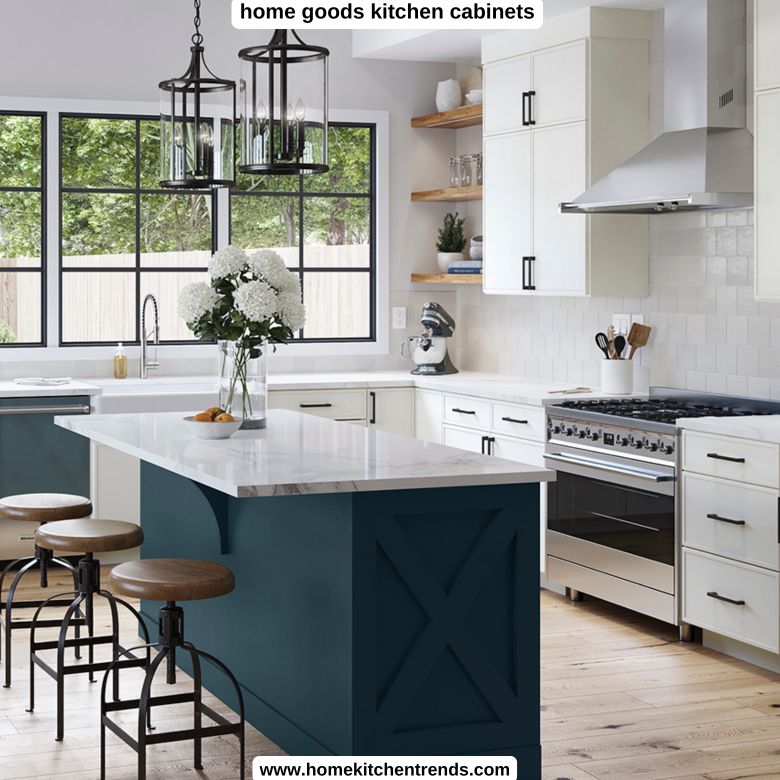
Functional Considerations
Elegance must be paired with functionality. Consider these elements:
a. Storage Solutions
- Pull-Out Shelves: For easy access to items.
- Lazy Susans: Ideal for corner cabinets.
- Built-In Organizers: For cutlery, spices, and pots.
b. Cabinet Height and Depth
- Standard Height: Typically 34.5 inches for base cabinets.
- Standard Depth: Usually 24 inches deep.
- Customization: Consider taller home goods kitchen cabinets or deeper units for extra storage.
c. Lighting
- Under-Cabinet Lighting: Illuminates countertops and enhances visibility.
- Inside-Cabinet Lighting: Adds a touch of elegance and makes items easier to find.
Choosing Hardware
The right hardware can complement your cabinets’ style:
a. Knobs vs. Pulls
- Knobs: Traditional and simple, suitable for cabinets and drawers.
- Pulls: Modern and functional, easier for larger drawers.
b. Material Choices
- Brass: Classic and warm.
- Chrome: Sleek and contemporary.
- Oil-Rubbed Bronze: Rustic and elegant.
Custom vs. Prefabricated Cabinets
Deciding between custom and prefabricated cabinets depends on your budget and needs:
a. Custom Cabinets
- Pros: Tailored to your kitchen’s exact dimensions, unique designs.
- Cons: More expensive, longer lead time.
b. Prefabricated Cabinets
- Pros: More affordable, quicker installation.
- Cons: Limited customization options, may require modifications.
Installation Tips
Proper installation ensures your home goods kitchen cabinets function well and look great:
- Hire a Professional: For accurate measurement and installation.
- Check Leveling: Ensure cabinets are level to prevent doors and drawers from misaligning.
- Secure Properly: Use appropriate anchors and screws for a stable installation.
Maintenance and Care
Maintaining your cabinets preserves their elegance and functionality:
- Regular Cleaning: Use a mild cleaner and soft cloth to avoid damage.
- Avoid Excess Moisture: Wipe spills immediately to prevent warping.
- Touch-Up Paint or Stain: Address scratches or chips promptly.
Trends and Innovations
Stay updated with current trends to keep your home goods kitchen cabinets stylish:
- Smart Cabinets: Features like built-in charging stations and touchless controls.
- Sustainable Materials: Eco-friendly options like bamboo or reclaimed wood.
- Minimalist Designs: Streamlined and functional with fewer embellishments.
Advanced Design Features
a. Hidden Compartments and Features
- Pull-Out Pantries: Tall, narrow cabinets with shelves that slide out for easy access to pantry items.
- Built-In Recycling Bins: Conveniently integrated into cabinets for separating waste.
- Drawer Inserts: Customizable compartments for cutlery, utensils, and other home goods kitchen cabinets tools.
b. Glass and Open Shelving
- Glass-Front Cabinets: Add a touch of sophistication and allow you to display glassware or decorative items.
- Open Shelving: Provides a casual, open feel and makes frequently used items easily accessible. However, it requires more frequent organization and cleaning.
c. Integrated Appliances
- Panel-Ready Appliances:home goods kitchen cabinets that are designed to seamlessly integrate with appliances like refrigerators, dishwashers, and ovens, making them less conspicuous.
- Concealed Appliances: Hidden behind cabinet doors to maintain a clean and streamlined look.
Ergonomics and Accessibility
Designing a kitchen that is not only stylish but also accessible is crucial:
a. Adjustable Shelving
- Customizable Heights: Allows you to adapt shelves to different items, improving accessibility and maximizing storage.
b. Easy Reach and Convenience
- Pull-Out and Tilt-Out Features: Include home goods kitchen cabinets with pull-out racks or tilt-out trays to make reaching items easier.
- Ergonomic Design: Consider cabinet heights and depths that reduce the need for bending or stretching, enhancing comfort during use.
Color Schemes and Finishes
Color plays a significant role in the mood and functionality of your kitchen:
a. Two-Tone Cabinets
- Contrasting Colors: Pairing different colors for upper and lower home goods kitchen cabinets can create visual interest and depth.
- Accent Colors: Use bold colors or unique finishes for a focal point or to complement your overall kitchen theme.
b. Textured Finishes
- Distressed or Antiqued: Adds a rustic charm, ideal for farmhouse or cottage-style kitchens.
- Matte vs. Glossy: Matte finishes are less prone to fingerprints and scratches, while glossy finishes reflect light and add a modern touch.
Budget Considerations
Managing your budget effectively while achieving the desired elegance:
a. Cost Breakdown
- Materials: Solid wood and custom designs typically cost more than MDF or prefabricated options.
- Labor: Professional installation can add to the cost, but ensures a high-quality finish.
b. Value vs. Cost
- Long-Term Investment: Consider the longevity and durability of materials. Investing in higher-quality cabinets can save money on repairs and replacements in the future.
- Cost-Saving Tips: Opt for semi-custom home goods kitchen cabinets or mix and match pre-fabricated and custom elements to stay within budget.
Eco-Friendly Options
Sustainability is increasingly important in home design:
a. Sustainable Materials
- Bamboo: A fast-growing, renewable resource that’s both durable and stylish.
- Reclaimed Wood: Offers unique character and reduces the environmental impact of new materials.
b. Low-VOC Finishes
- Healthier Choices: Opt for finishes and paints with low volatile organic compounds (VOCs) to reduce indoor air pollution and promote a healthier living environment.
Cabinet Maintenance and Repairs
Keeping your cabinets in top condition:
a. Regular Cleaning
- Avoid Harsh Chemicals: Use gentle cleaners to prevent damage to the finish.
- Dust and Debris: Regularly wipe down surfaces to prevent buildup that can cause scratches or stains.
b. Repair and Touch-Up
- Minor Scratches: Use touch-up pens or furniture polish to address small imperfections.
- Professional Repair: For significant damage, consider consulting a professional to ensure proper repair and finish restoration.
Trends and Innovations in Cabinet Design
Stay ahead of the curve with the latest trends:
a. Smart Technology
- Voice-Controlled Features: Integration with home automation systems for convenient control.
- Built-In Charging Stations: Conveniently located within cabinets for charging electronic devices.
b. Minimalist and Sleek Designs
- Handle-Free Cabinets: Push-to-open mechanisms for a clean, uninterrupted surface.
- Streamlined Profiles: Emphasizes simplicity and functionality with minimal ornamentation.
Customization and Personalization
Personalizing your home goods kitchen cabinets can significantly enhance both functionality and aesthetics:
a. Custom Cabinet Designs
- Unique Sizes and Configurations: Custom cabinets can be tailored to fit unusual spaces, like awkward corners or high ceilings.
- Specialized Storage Solutions: Incorporate features like wine racks, spice racks, or built-in coffee stations based on your specific needs and preferences.
b. Personal Touches
- Custom Moldings and Trims: Add distinctive moldings or trims to enhance the character of your cabinets and align them with your overall design theme.
- Handcrafted Elements: Consider handcrafted cabinet doors or custom finishes for a unique, personalized touch.
Cabinet Door Styles
Exploring different door styles can help you achieve your desired look:
a. Shaker Doors
- Characteristics: Simple, clean lines with a classic, versatile design.
- Ideal For: Traditional, transitional, and modern kitchens.
b. Inset Doors
- Characteristics: Doors that sit inside the cabinet frame, creating a flush appearance.
- Ideal For: Traditional and high-end home goods kitchen cabinets, providing a refined, custom look.
c. Overlay Doors
- Characteristics: Doors that sit on top of the cabinet frame, covering it partially or fully.
- Ideal For: Contemporary and modern kitchens, offering a seamless and streamlined appearance.
d. Glass-Front Doors
- Characteristics: Doors with glass panels, available in clear, frosted, or patterned glass.
- Ideal For: Displaying attractive dishware or adding a touch of elegance.
Cabinet Lighting
Proper lighting can enhance the beauty and functionality of your cabinets:
a. Task Lighting
- Under-Cabinet Lighting: Provides illumination directly on countertops, making cooking and food preparation easier.
- Recessed Lighting: Installed above cabinets to provide general lighting and create a uniform light distribution.
b. Ambient Lighting
- Cabinet Lighting: Built into the top of home goods kitchen cabinets to wash the walls with light and create a warm ambiance.
- LED Strip Lights: Flexible and energy-efficient, ideal for adding subtle lighting effects.
c. Accent Lighting
- Display Cabinet Lighting: Highlight specific items in glass-front cabinets with LED or puck lights.
- Toe-Kick Lighting: Installed at the bottom of cabinets to provide a gentle glow and enhance the overall aesthetic.
Integrating Technology
Incorporating technology into your cabinetry can enhance convenience and functionality:
a. Smart Cabinets
- Integrated Sensors: Detect when a home goods kitchen cabinets is opened or closed, or when the contents need replenishing.
- Touchless Controls: Allow you to operate cabinets with a wave of the hand, reducing the need to touch handles.
b. Charging Stations
- Built-In Outlets: Include power outlets or USB ports within cabinets for charging devices and reducing clutter on countertops.
- Wireless Charging Pads: Installed within cabinets or countertops for convenient device charging.
Kitchen Layout Considerations
Your home goods kitchen cabinets choices should complement your kitchen layout:
a. Work Triangle Design
- Optimized Workflow: Arrange cabinets to create an efficient workflow between the sink, stove, and refrigerator.
- Accessibility: Ensure that frequently used items are within easy reach to streamline cooking and cleaning processes.
b. Open Concept Layouts
- Seamless Integration: Choose home goods kitchen cabinets that blend with open spaces and maintain a cohesive design with adjacent living areas.
- Visual Appeal: Incorporate elements like glass-front cabinets or open shelving to maintain a visually open feel.
Trends in Cabinet Hardware
The hardware you choose can significantly impact the overall look of your cabinets:
a. Handle Styles
- Bar Pulls: Long, horizontal handles that add a modern, sleek touch.
- Cup Pulls: Rounded or square pulls that offer a classic or vintage look.
b. Knob Styles
- Simple Knobs: Minimalistic designs that complement a wide range of styles.
- Decorative Knobs: Intricately designed knobs that serve as focal points and add character.
c. Finish and Texture
- Brushed Nickel: Offers a contemporary, sophisticated look.
- Oil-Rubbed Bronze: Provides a classic, rustic appeal.
- Matte Black: Adds a modern, bold contrast.
Sustainability and Eco-Friendly Practices
Sustainability is becoming increasingly important in kitchen design:
a. Eco-Friendly Materials
- Low-VOC Finishes: Minimize harmful emissions and improve indoor air quality.
- Sustainable Wood: Opt for wood certified by organizations like the Forest Stewardship Council (FSC).
b. Energy-Efficient Lighting
- LED Lights: Use less energy and have a longer lifespan compared to traditional bulbs.
- Solar-Powered Options: Harness renewable energy for your kitchen lighting.
Professional Assistance
Consider working with professionals to achieve the best results:
a. Interior Designers
- Expert Guidance: Provide insights on design trends, materials, and color schemes to create a cohesive look.
- Space Planning: Help optimize the layout and functionality of your home goods kitchen cabinets.
b. Cabinet Makers and Installers
- Custom Solutions: Offer expertise in creating bespoke cabinetry that meets your specific needs and preferences.
- Precision Installation: Ensure that cabinets are installed correctly and function as intended.
Planning for Future Changes
Plan for potential future updates or changes:
a. Modular Designs
- Flexible Layouts: Opt for modular home goods kitchen cabinets that can be easily reconfigured or expanded if needed.
- Adaptable Features: Choose cabinets with adjustable shelving or removable components for future modifications.
b. Long-Term Maintenance
- Durable Materials: Invest in high-quality materials that withstand wear and tear.
- Timeless Design: Select classic styles and finishes that remain appealing over time.
To sum up
Your home’s style and functionality are fundamentally based on the home goods kitchen cabinets . A kitchen that is both sophisticated and extremely practical can be created by experimenting with cutting-edge design elements, using technology, and taking sustainability into account. It’s important to match your decisions with your needs—both short- and long-term—and personal style, whether you choose prefabricated or custom solutions. A kitchen that improves your house and creates an inviting area for years to come can be achieved with careful planning and professional advice.Timeless design combined with functionality.

